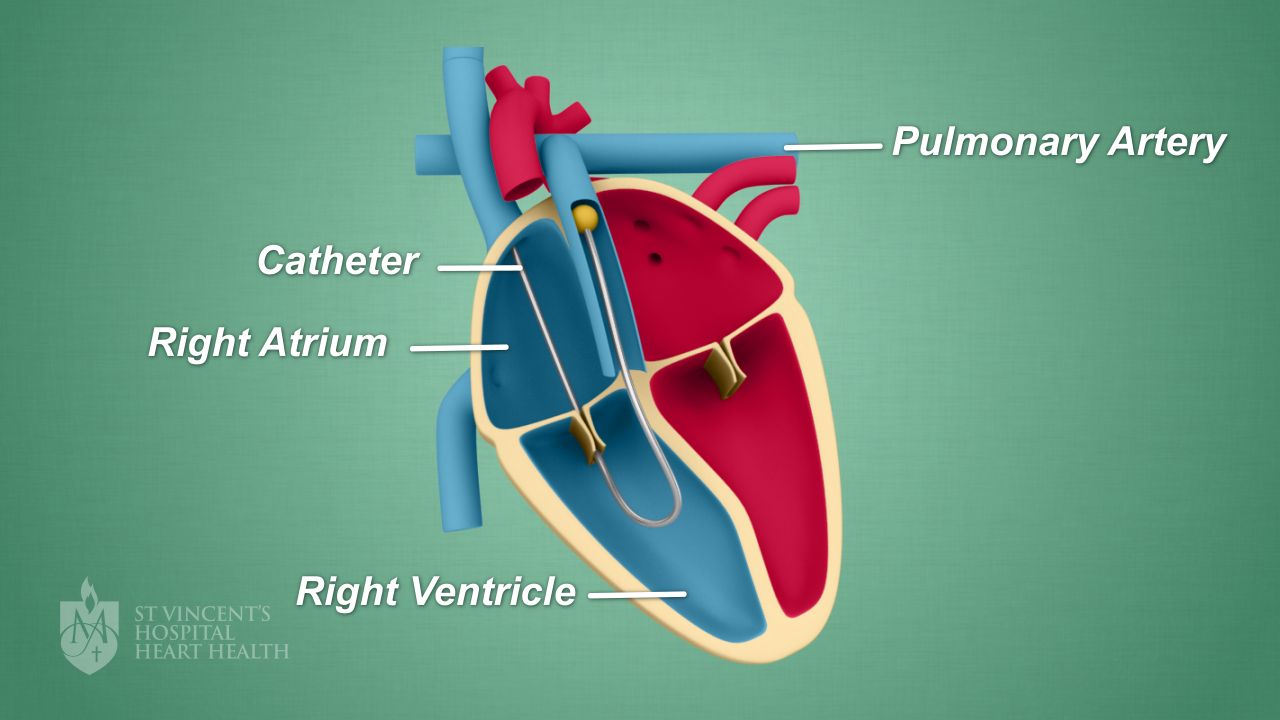Right Heart Catheter
In a right heart catheter procedure, a catheter is passed into a vein in your neck or groin to measure the pressure in your heart and lungs.
What is a right heart catheter?
Why do I need a right heart catheter?
What are the risks of having a right heart catheter?
How do I prepare for a right heart catheter?
What happens during a right heart catheter?
What happens after a right heart catheter?
What is a right heart catheter?
In a right heart catheter procedure, a catheter is passed into a vein in your neck or groin to measure the pressure in your heart and lungs. The procedure helps your doctor to work out how well your heart is working.
This image below shows a right heart catheter.

Why do I need a right heart catheter?
A right heart catheter helps to diagnose or manage conditions like:
If you have recently had heart transplant surgery, your doctor may also perform a heart biopsy during a right heart catheter. A heart biopsy checks if there is any inflammation in your heart, or if your body is not accepting the donor heart.
What are the risks of having a right heart catheter?
As with any surgery, there are some risks associated with a right heart catheter. Your doctor will explain the risks to you before you agree to the surgery - and you’re also encouraged to discuss any questions or concerns with your medical team.
The most common risks associated with having a right heart catheter procedure are:
- Bruising or bleeding at the site where the catheter is inserted
- Arrhythmias
Your doctor will also ask you to sign a consent form to agree to the procedure.
How do I prepare for a right heart catheter?
No fasting is required and you should take your medications as normal unless instructed otherwise by your doctor.
If you take warfarin, you will need a recent INR level (taken within 24 hours) when you come to your appointment.
Just before your right heart catheter, you’ll be asked to wear a hospital gown and remove all jewellery.
What happens during a right heart catheter?
Your right heart catheter procedure takes place in a procedure room in the hospital. You will be taken to the procedure room on a trolley or wheelchair and asked to lie on a narrow table.
You will be awake throughout the procedure, and before it begins your doctor may offer you sedation to help you relax. Make sure you let your doctor or nurse know if you experience any back or breathing problems.
During your procedure, your doctor will:
- Connect you to a heart monitor to record your heart rate, blood pressure and blood oxygen levels
- Place sterile sheets on your chest and neck (or groin area)
- Clean the skin over the neck or groin
- Give you local anaesthetic to numb the area (this may sting a little when it is given)
- Gently pass a catheter into a vein to the heart - you may feel some pressure when the catheter is put in
- Record pressure readings from the heart chambers and lungs
- Give you medication, depending on your heart’s pressure readings
- Remove the catheter and apply pressure where it was inserted
The procedure usually takes less than an hour.
What happens after a right heart catheter?
After your right heart catheter procedure is finished, you will be watched closely in a recovery area. Depending on how you feel, you might need to rest in bed for a while.
- You’ll be allowed to sit up comfortably if your neck vein was used in the procedure
- Your doctor will briefly explain your results of the right heart catheter and recommend the best treatment for you, and you’ll be advised if you need to stay overnight in the hospital or if you can go home
- You will be able to eat and drink normally after the procedure and asked to apply light pressure to the site if you need to sneeze, cough, laugh or bend over to prevent bleeding.
- Even though it’s advisable to avoid heavy lifting for 24 hours, most people can return to their normal activities the next day
You can also read our Right Heart Catheter Patient Information brochure for more information. Once you return home, if you experience any swelling, increased pain or bleeding in your neck, fever or chills, dizziness or chest pain, contact your doctor.